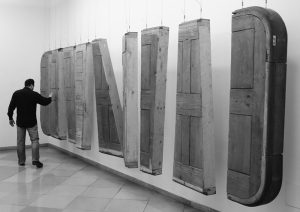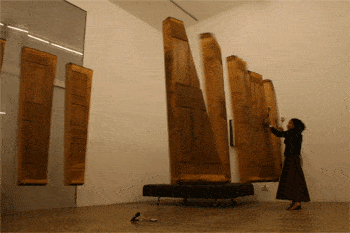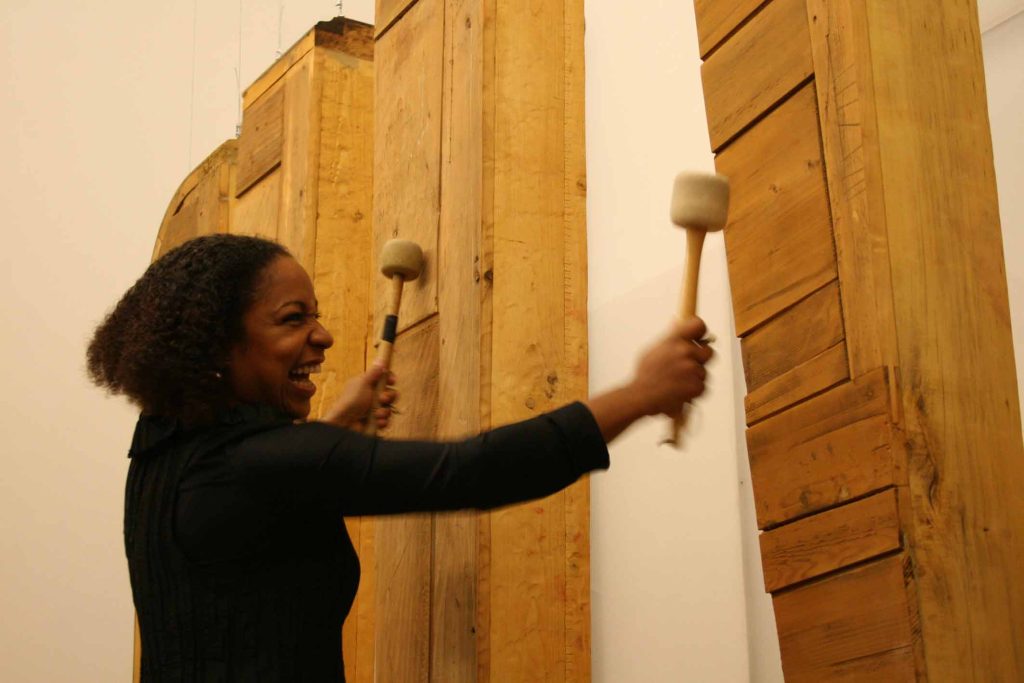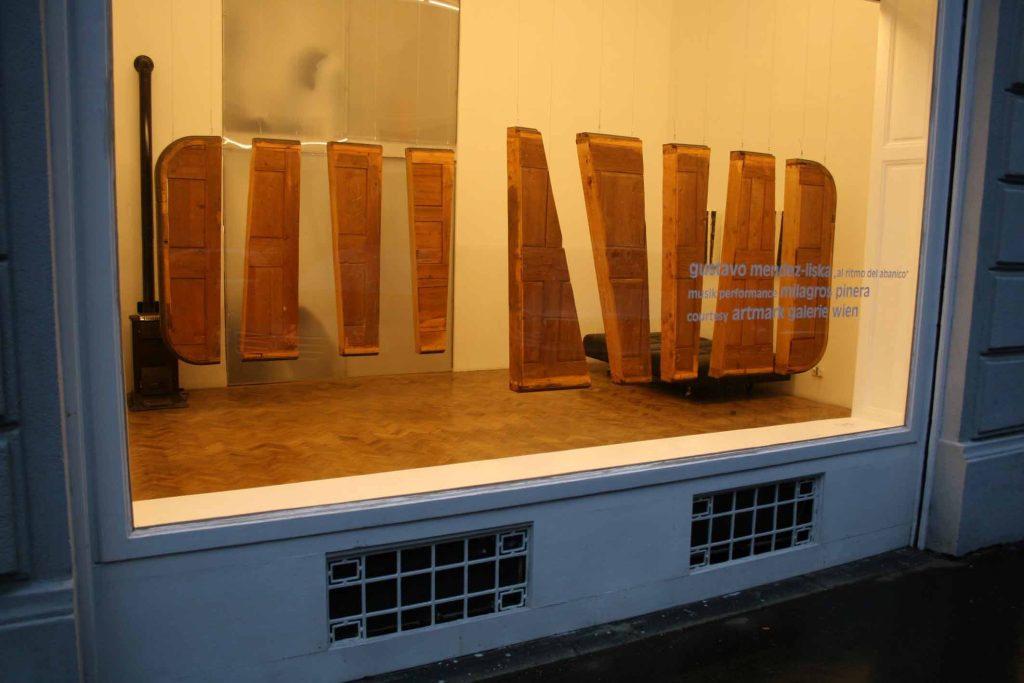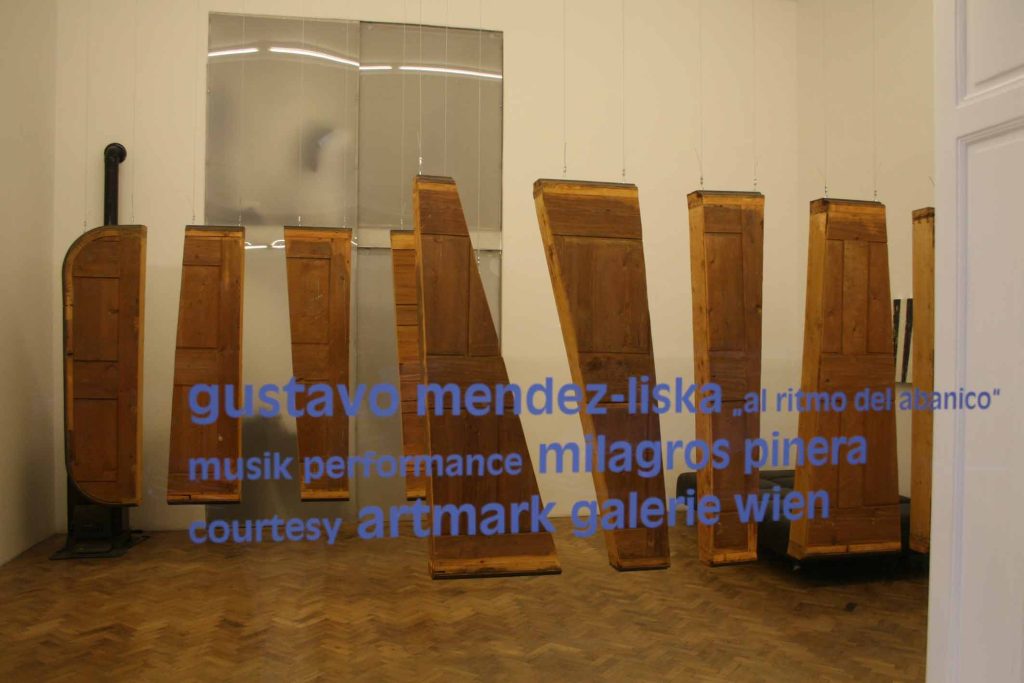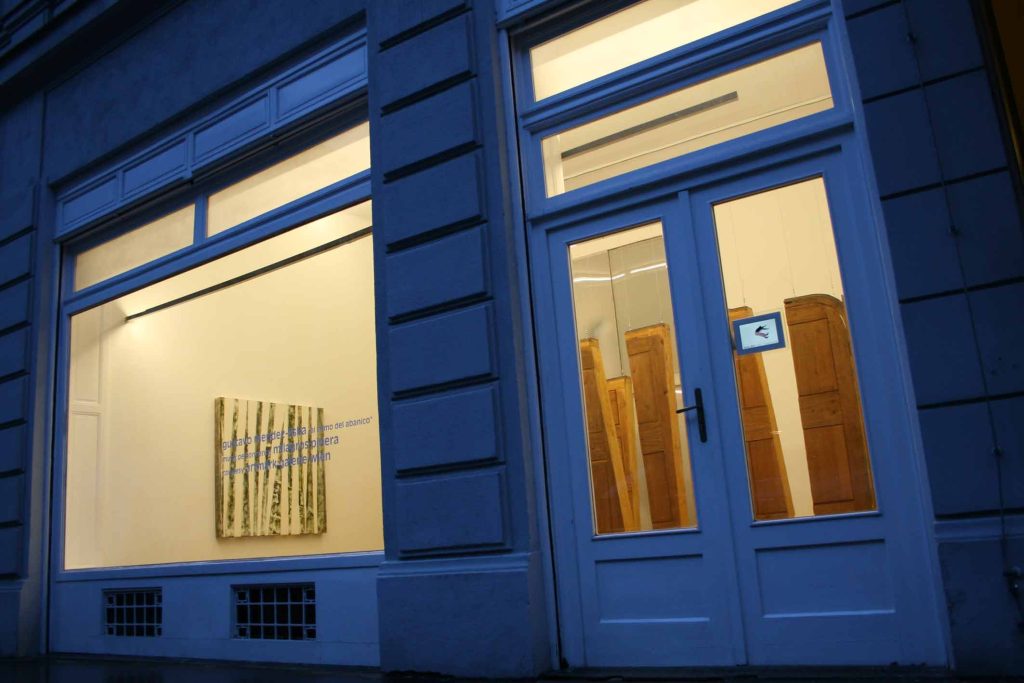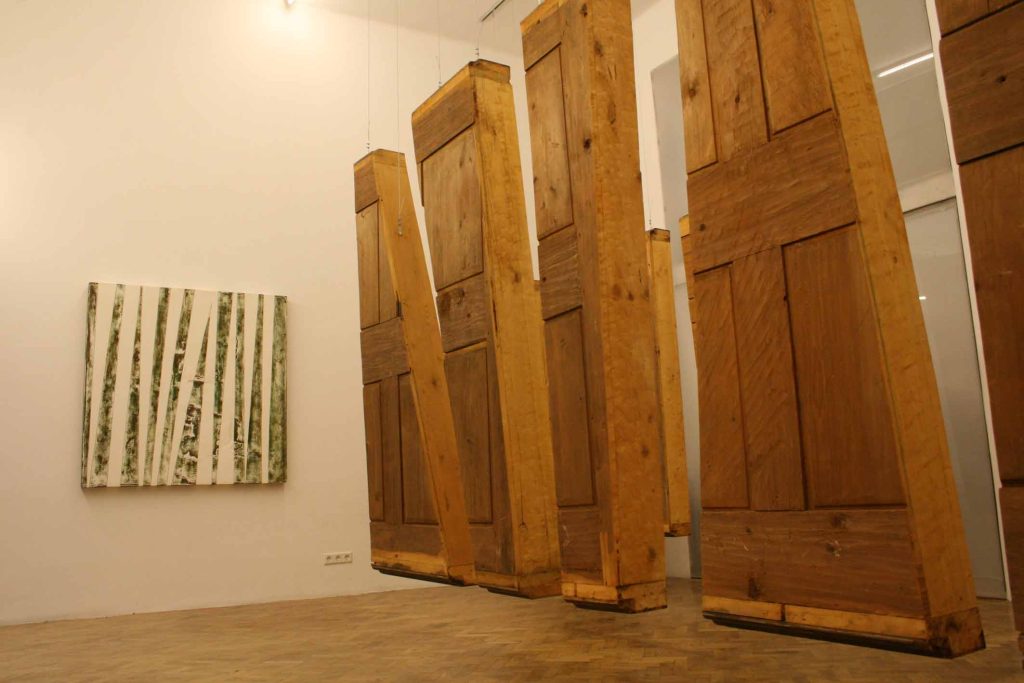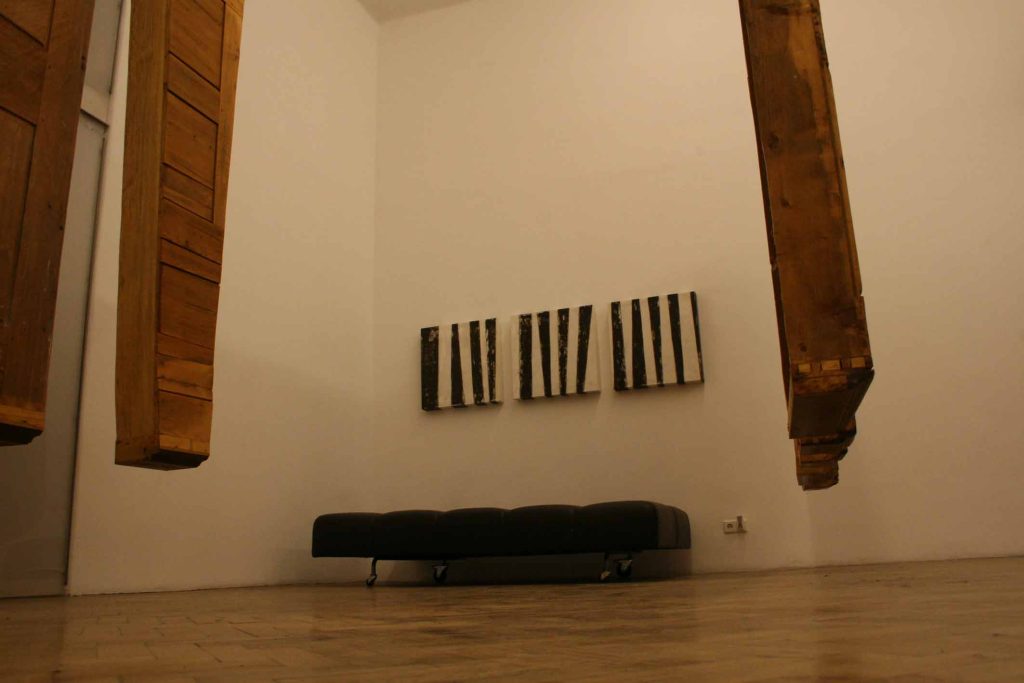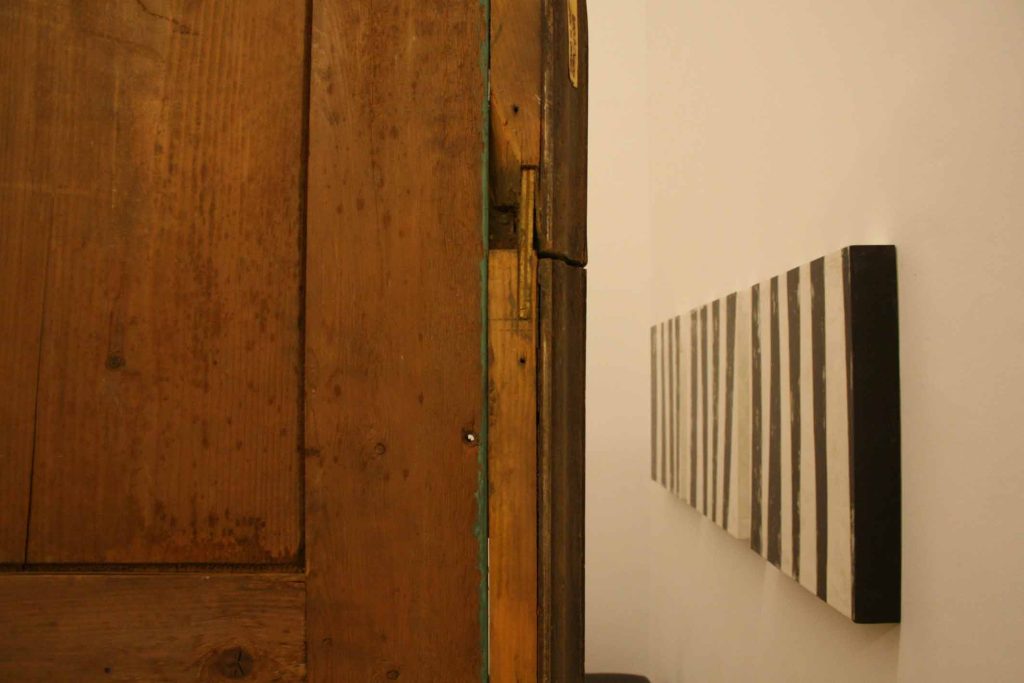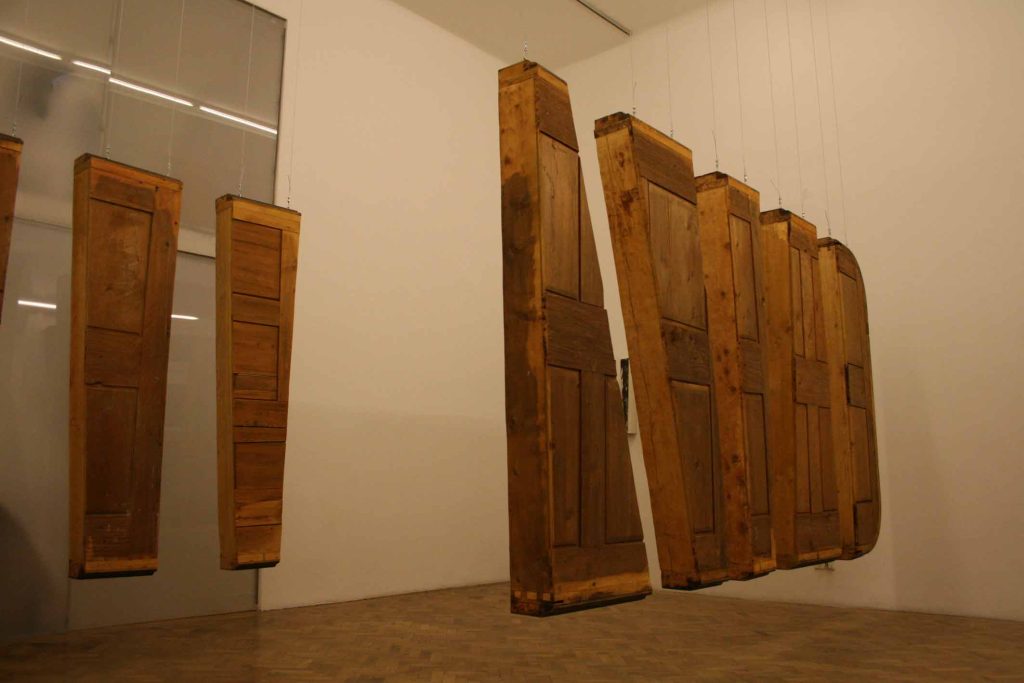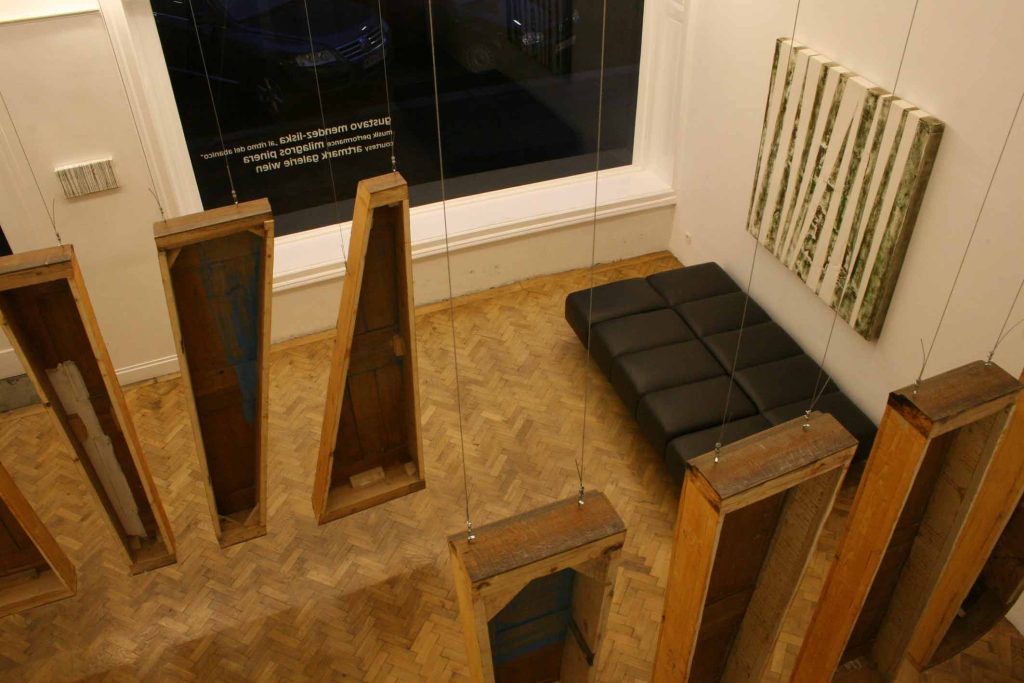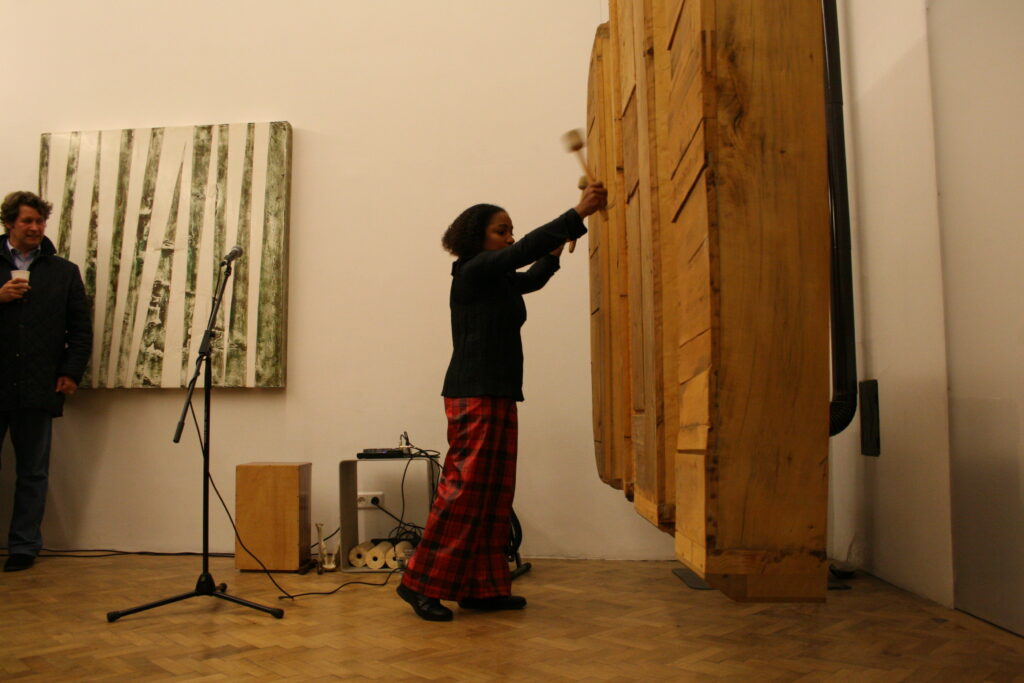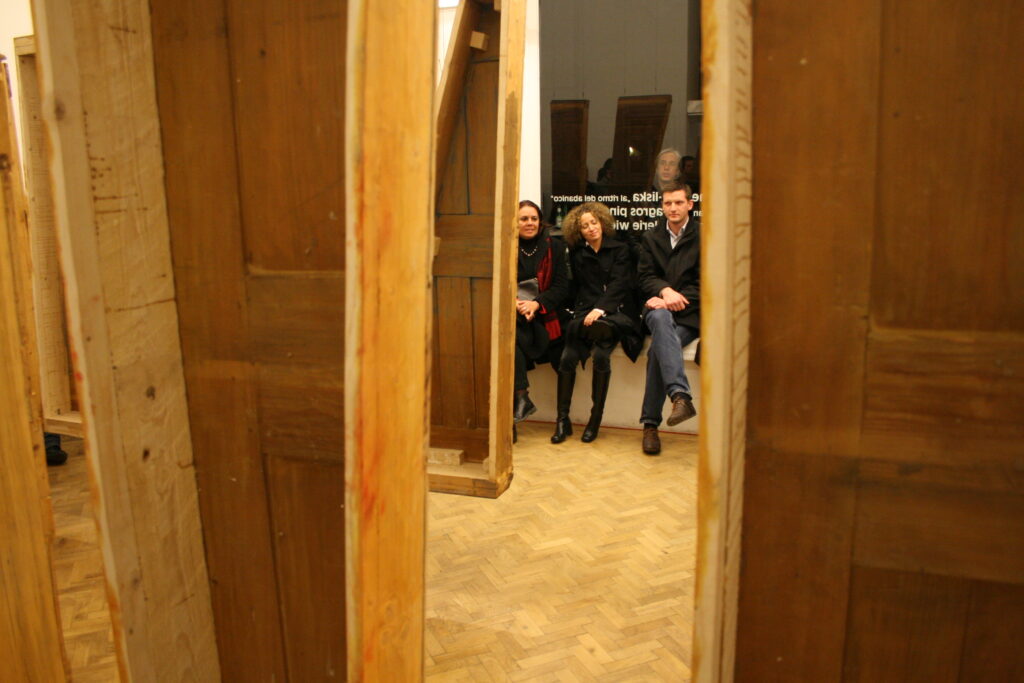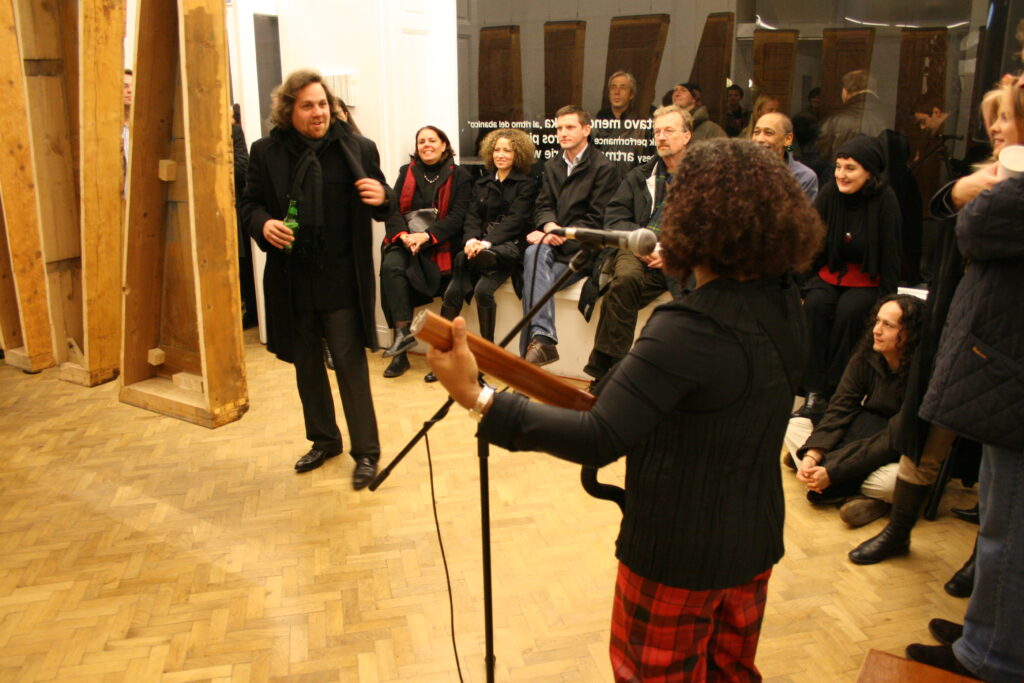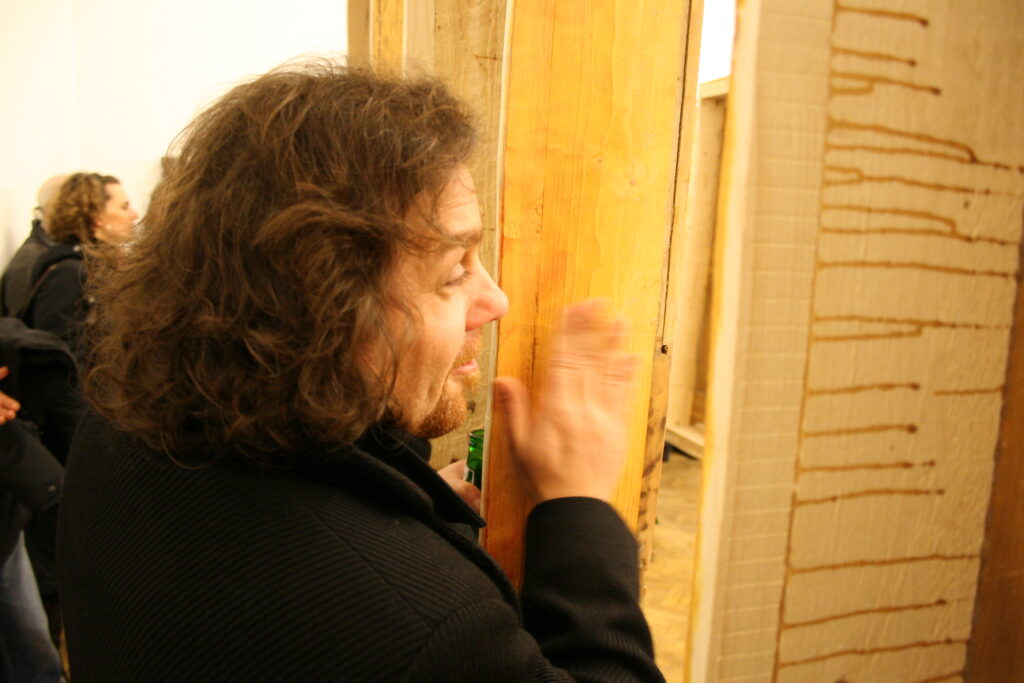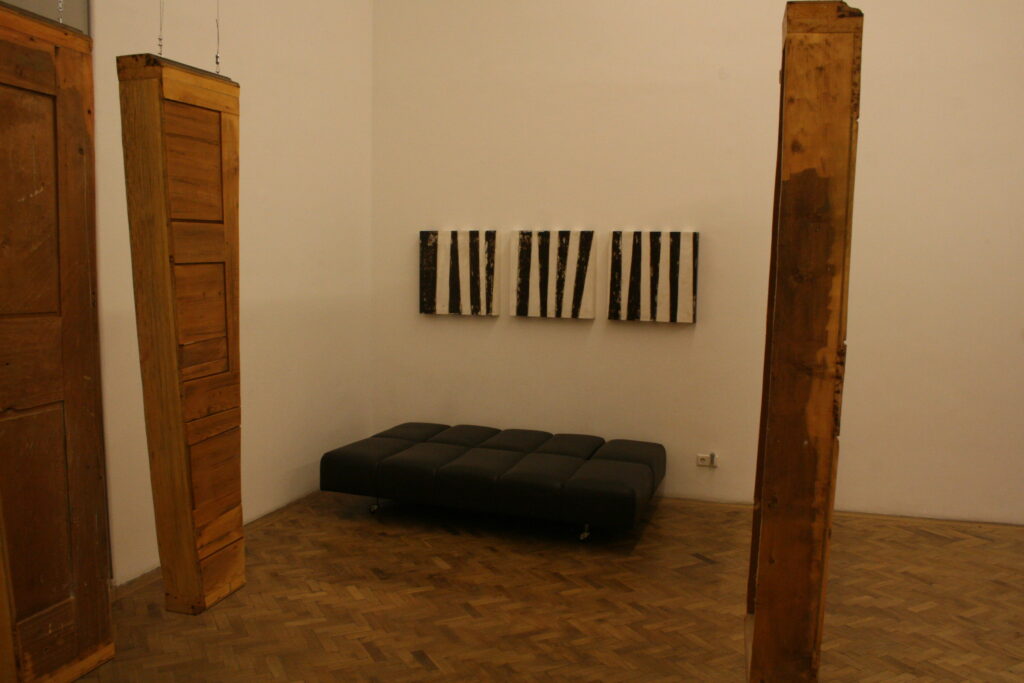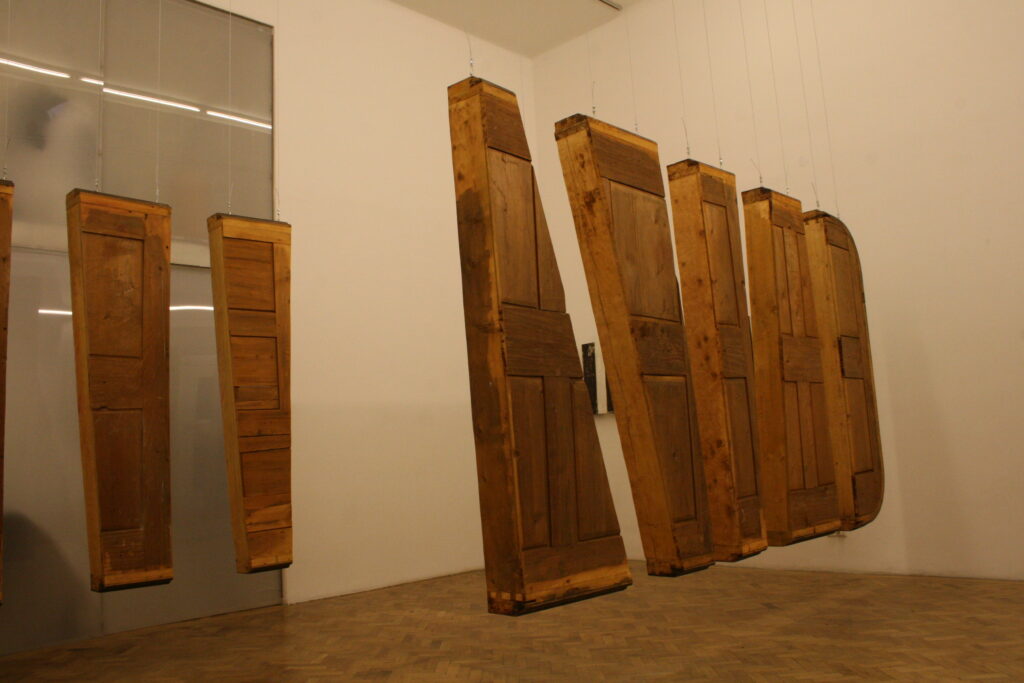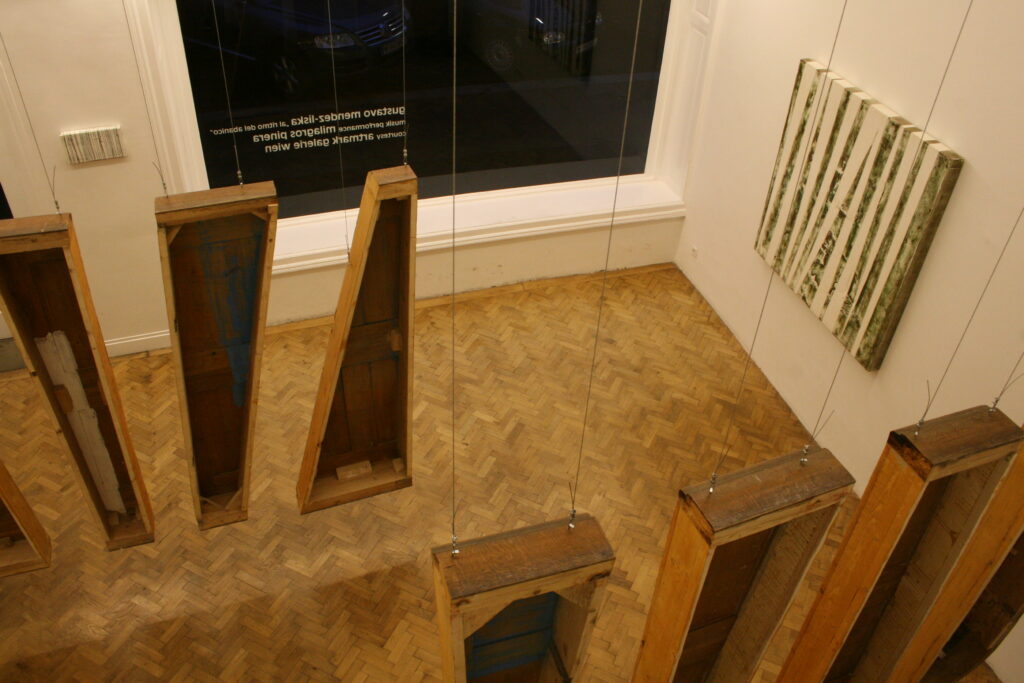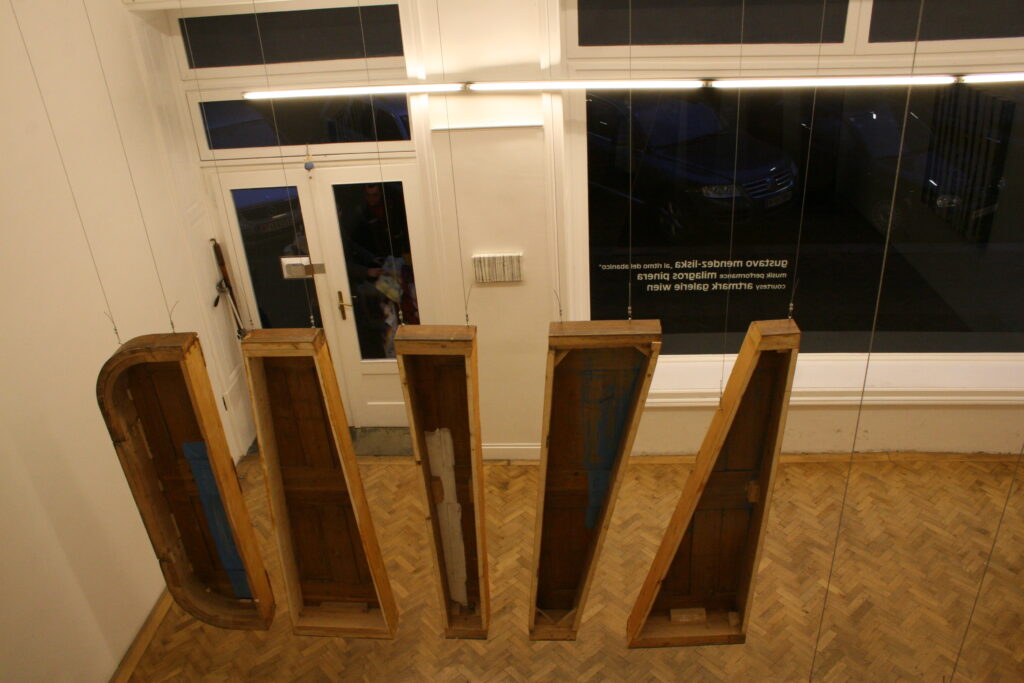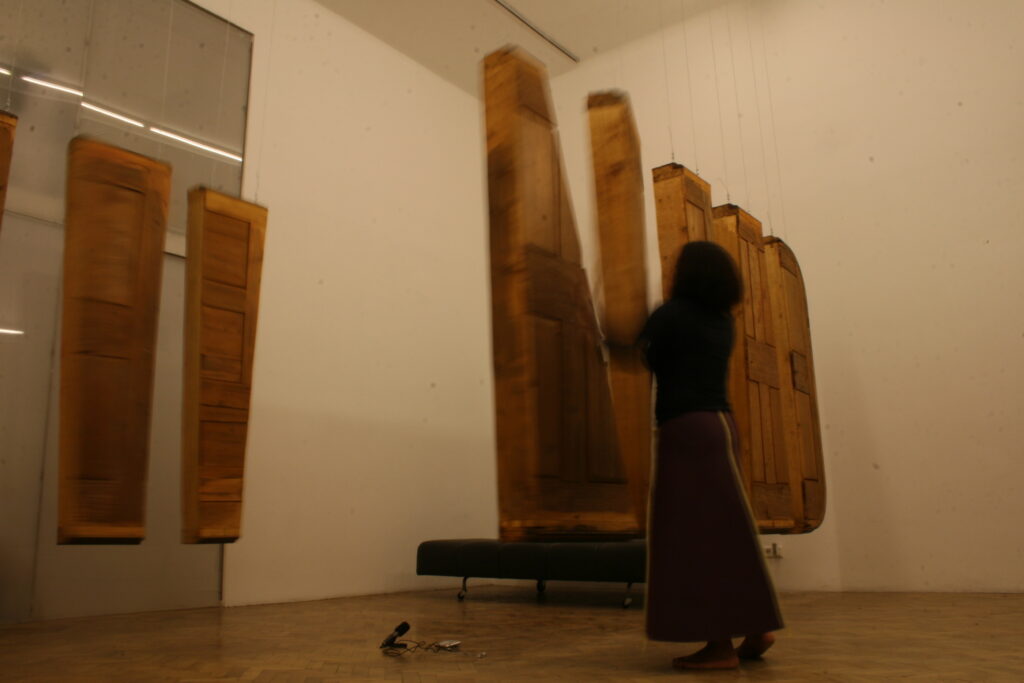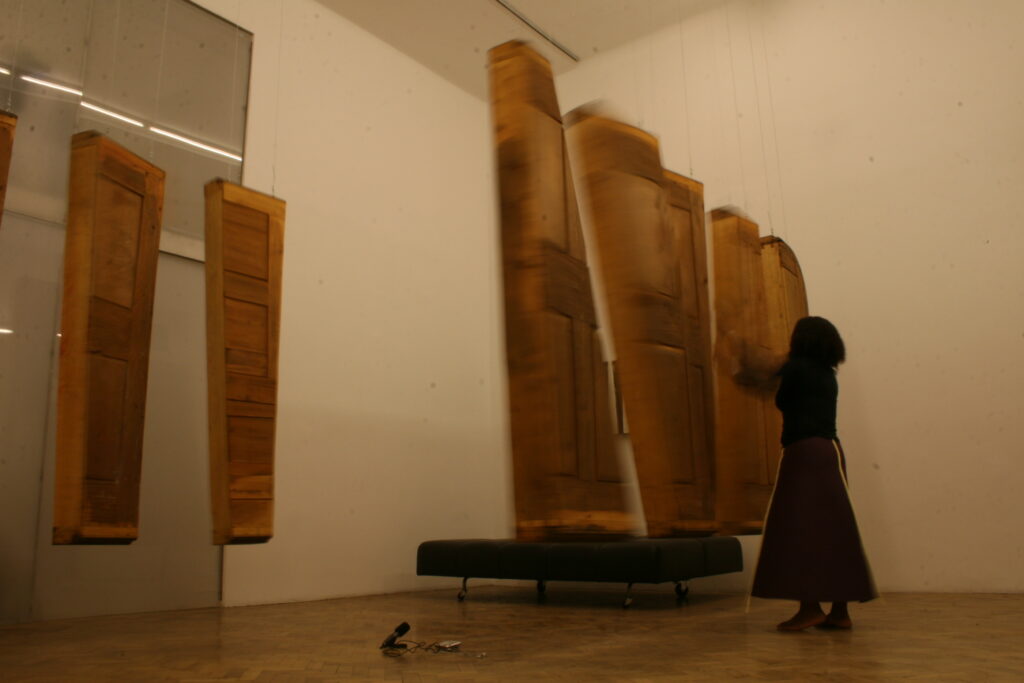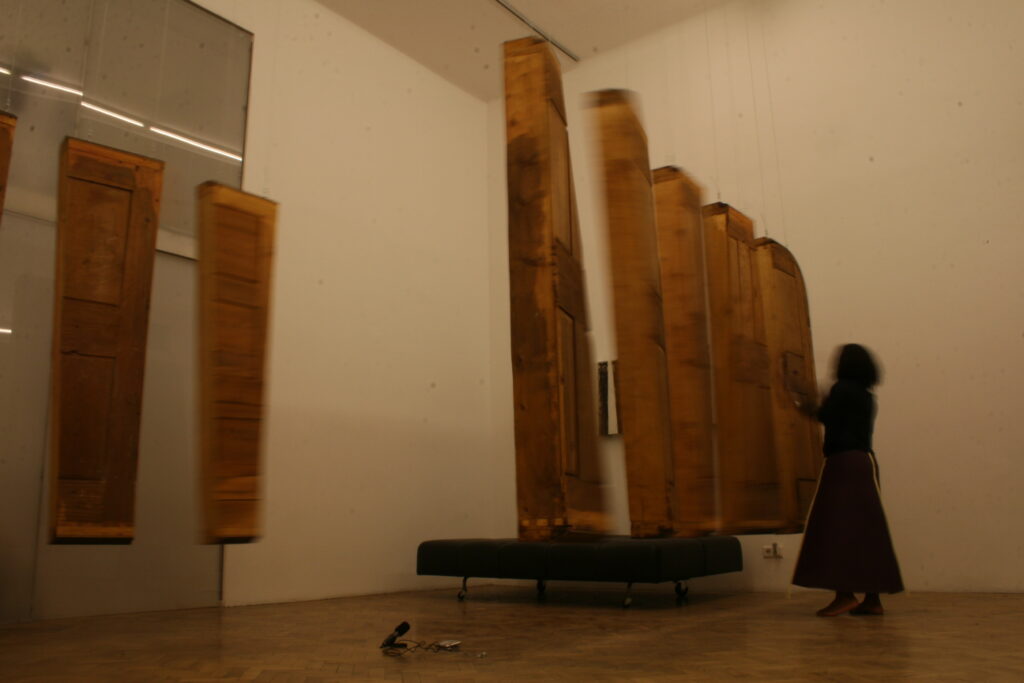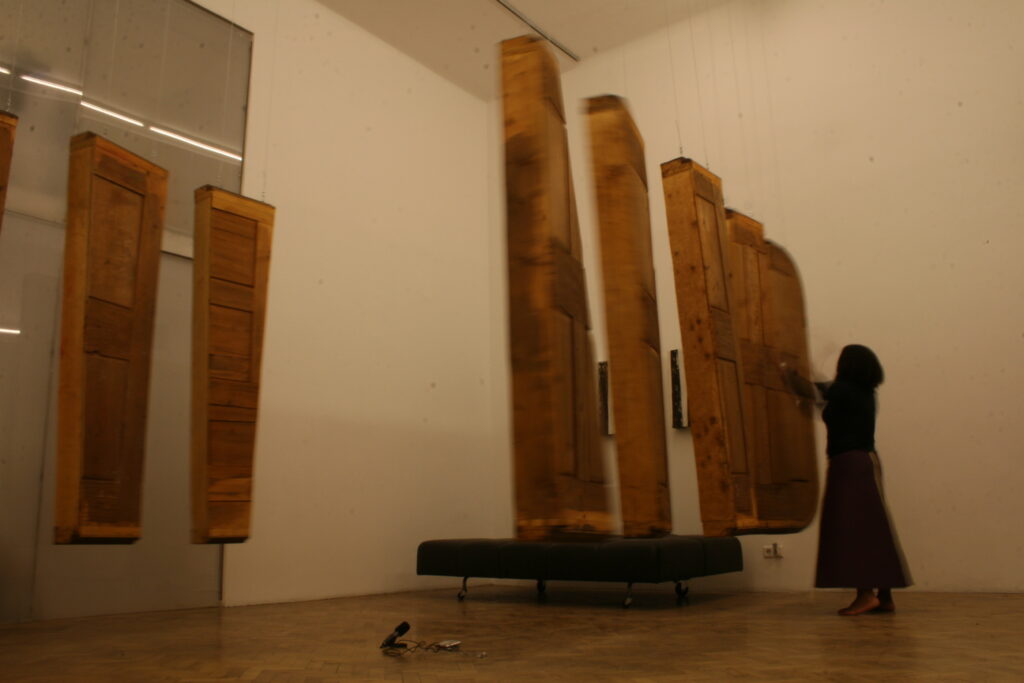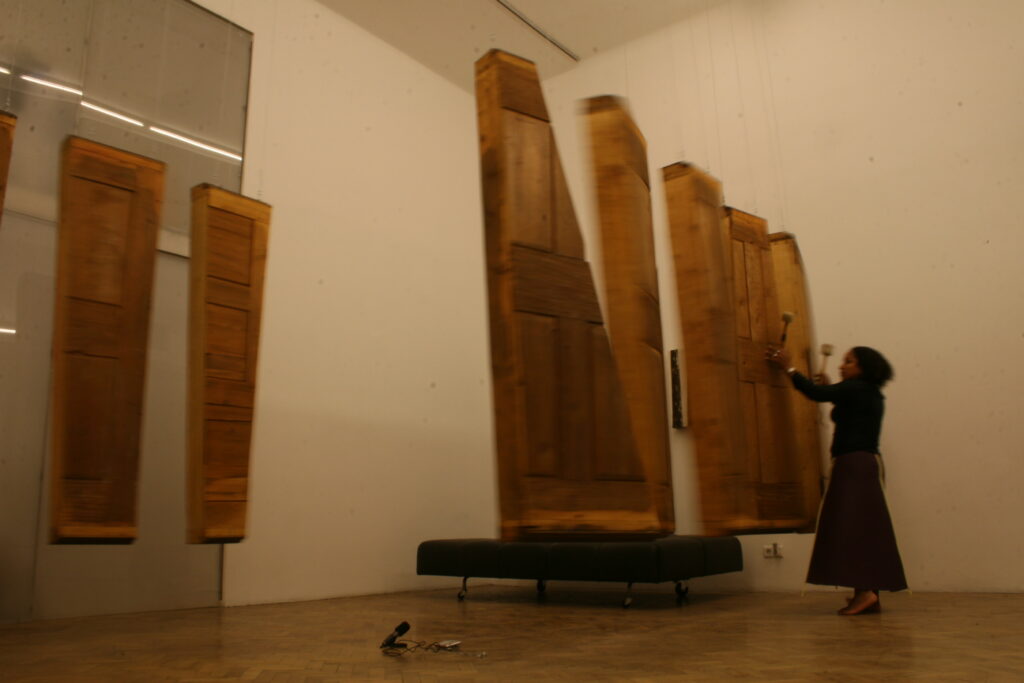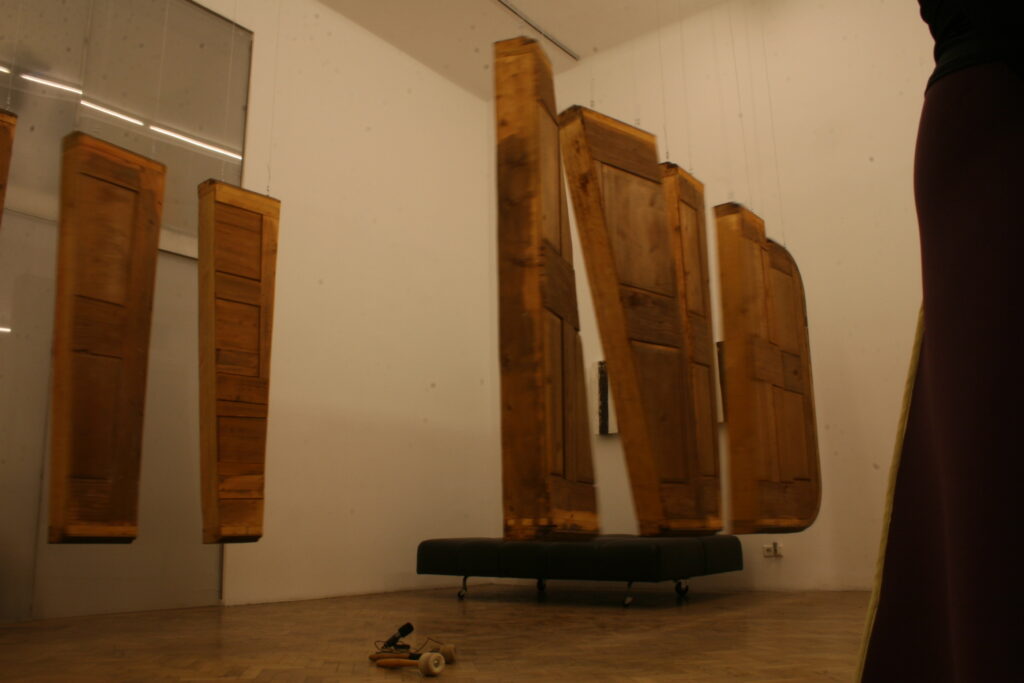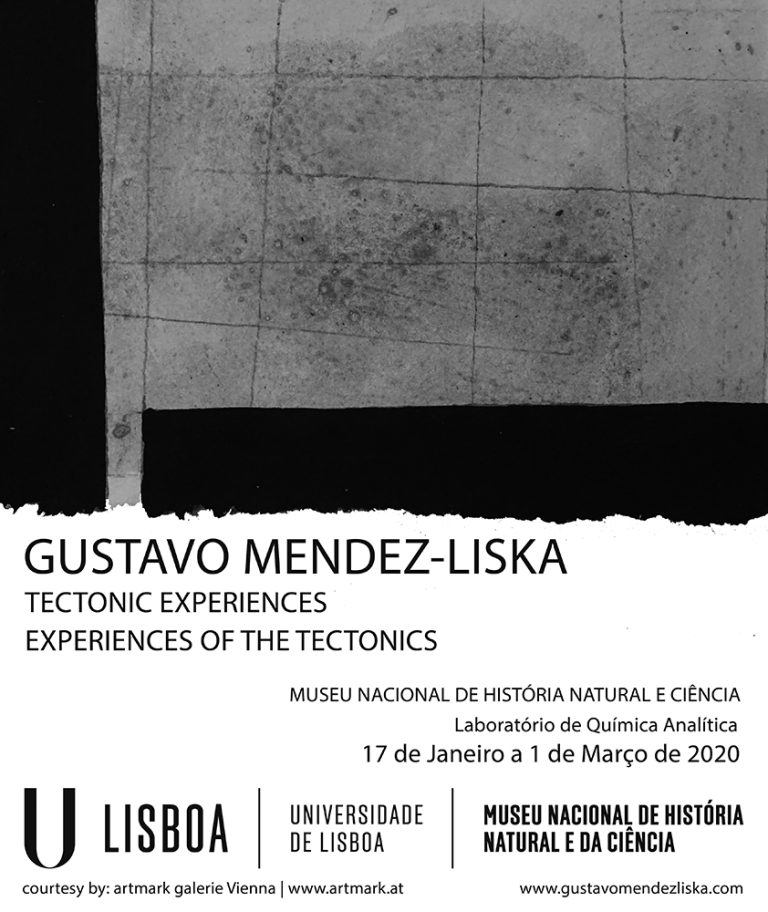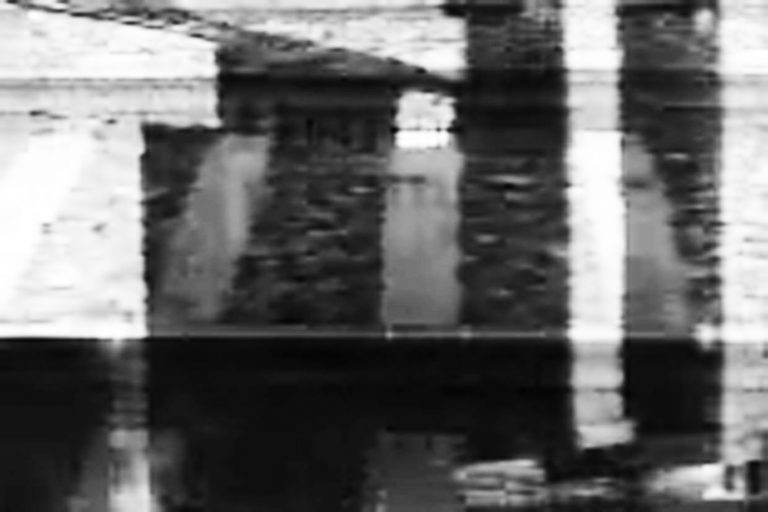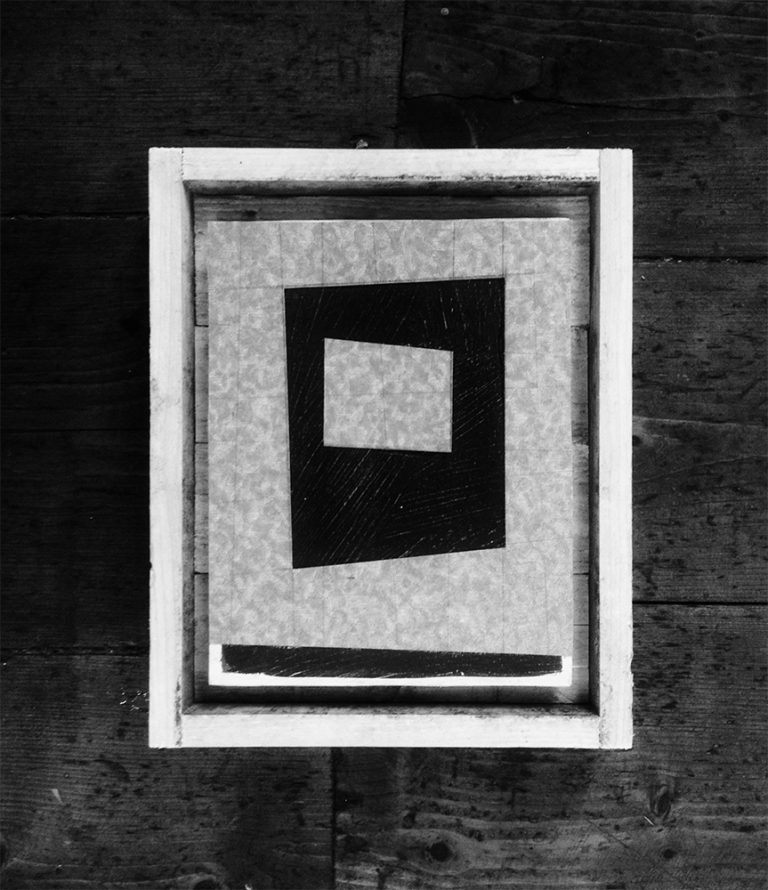Searching for a notation that can draw attention to the silences or gaps in communication, speech, or other forms of expression.
intro: „let us assume that the most attractive aspect of a fan is not the refreshment of its user, but rather the act of unfolding and the associated opening of a space between the originally gathered material. let us further assume that the space thus created forms a rhythm together with the material and that this rhythm constitutes the actual meaning of the fan, so that one may speak in a certain sense of the interspace as the catalyst of the material. and let us finally assume that the score, graphically captured in this way, opens up to the viewer by walking through the interspace and thus gaining access to the almost tonal parameters.
gustavo mendez-liska’s installation will show us whether these assumptions are justified…“
Text © Christian Kollarovits 2008
Gustavo Mendez-Liska has been studying music and music theory since his youth in search of notations that suggest the rests. In this sense, rhythm was for him an element that made possible a sequence of whole, half, quarter and eighth rests, rather than the notes that were played in between. This attention to the pauses and the form of expressing them, or the silence and power of this non-clang and non-sound, pushed him so far that he eventually began to consider other means of expressing this sensual vision. Thus he began to experiment in the visual arts, where he eventually found his home and with which he also became known.
After a first short phase of figurative (representational) painting, he understood that it is not the object but much more the space between the objects that is to be thematised in all sharpness. Accordingly, his works (paintings, installations, videos) become abstract. Formally, he strives to organise colours, materials, light and shadow in the picture until the unpainted is expressed. Earlier, he experimented with diptychs and triptychs, in which this space created between the pictures was part of them. The works can be read from left to right, like a score on which the notes and especially the rests are indicated.
The depth or volume of hisworks refer to their own resonance. The culmination of this work then takes place in the exhibition of his paintings: the meticulousness of the hanging has only the purpose of emphasising the empty spaces between the paintings and enabling a communication between objects and now also visitors. Here, the individual works disappear to represent a whole idea. The ideal space is already perceived in the creation of his works through the selection of different techniques.
Consequently, his works are not intended for collectors and their art depots. Rather, they are works to be understood through hanging and installation in the resonance of space, object and visitor.
In this way, he unintentionally distances himself from the art frenzy and fashion, which in turn brings authenticity and independence. He can only work a-temporarily but rhythmically.
With the „rhythm of the fan“ he now wants to explore the whole experience: music, pauses, non-sound, description of pauses and silence an absolutely new system in the visual arts and music. This system has already been described in mesmerism and philosophical spherology. He talks about a system of interactions, that is, about the mutual influence of different objects in a space and about the description of a space by the elements it accommodates without naming the space itself. He has the analogy for this in the space described by a fan.
The fan formulates and travels a space that sets a certain mass in motion between two imaginary points or sounds. The repetition of this act results in a moment of relief for the actor. He explains that the sounds per se are not relevant, but the interaction between these sounds is significant. In this description, his negation of collectors, gallery owners or artists acting alone versus the interaction of different subjects is explained.
The individual is demythologised and subordinated to a group, the mystique is returned to the mystery. This unknown is to be induced through the co-playing of different actors: Artists, musicians, graphic artists and writers. All of them, in their expertise and through their own experience, try to describe the unknown, the pauses between two notes, the space between the movement of a fan and evoke the sphere that is created. Each position in itself is insignificant, abstract in form and bipolar in content, two-sided and with an internal resonance. The interplay of each individual form, however describes a universe that reflects the significance of the individual positions.
Text © Enrique Guitart 2007

